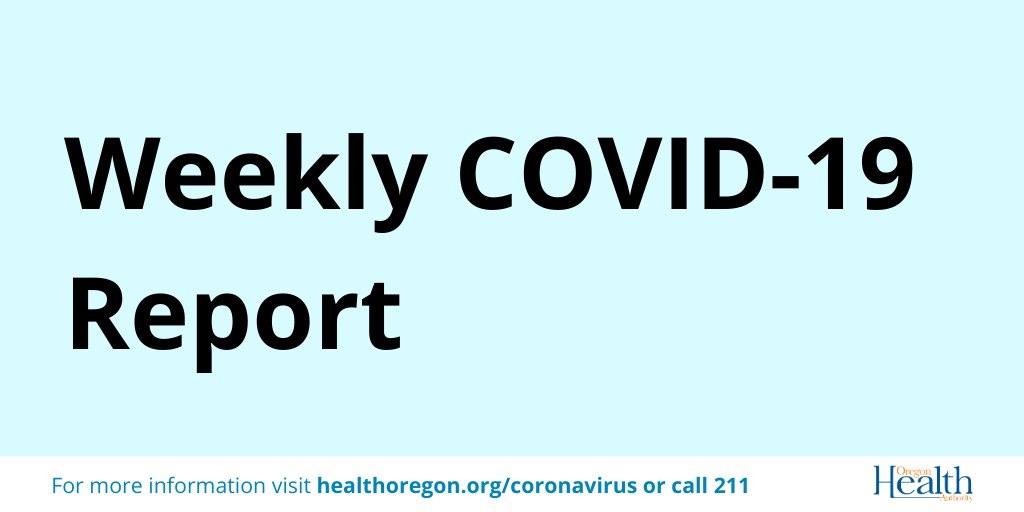
OHA Chief Medical Officer Dr. Dana Hargunani speaking at today's media briefing: "As a pediatrician, I know vaccines are a vital tool to help stop the spread of disease. The COVID-19 vaccines are safe and effective."
"At the same time, these safe and effective vaccines have posed new
challenges to our robust system of vaccination distribution in Oregon.
Distributing and administering large numbers of COVID-19 vaccines are
different than flu vaccines."
challenges to our robust system of vaccination distribution in Oregon.
Distributing and administering large numbers of COVID-19 vaccines are
different than flu vaccines."
"We’re rolling out a new vaccine in a pandemic: Scheduling, physical distancing and the observation period immediately after a vaccine is administered all have an impact on the logistics of organizing mass vaccination events."
"The two-dose regimens also demand specific tracking requirements so
data can be entered into our Alert IIS system and patients can be notified
when and where to get their 2nd dose. This makes it harder to organize
large-scale pop-up vaccination events."
data can be entered into our Alert IIS system and patients can be notified
when and where to get their 2nd dose. This makes it harder to organize
large-scale pop-up vaccination events."
"The ultra-cold storage requirements of the Pfizer vaccine make it
especially complex to distribute and administer. We're purchasing more
ultra-cold storage units for more hospitals, the current storage capacity
requires us to focus where and how we use the Pfizer vaccine."
especially complex to distribute and administer. We're purchasing more
ultra-cold storage units for more hospitals, the current storage capacity
requires us to focus where and how we use the Pfizer vaccine."
"The hard reality that Oregon, and every other state, faces is that there
are simply not enough vaccines to go around – and there won’t be for
many months. As a result, all states must prioritize.”
are simply not enough vaccines to go around – and there won’t be for
many months. As a result, all states must prioritize.”
"That prioritization process means we can’t rely on the standard vaccination distribution process. For some groups the distribution process has remained relatively simple because we can leverage pre- existing pathways, for example hospitals know how to vaccinate their own staff."
"For other groups it’s a more complex process: for example, vaccinating
health care workers who aren’t affiliated with a hospital – such as an
outpatient pediatrician like me – requires Oregon’s health care system to
forge new, temporary relationships."
health care workers who aren’t affiliated with a hospital – such as an
outpatient pediatrician like me – requires Oregon’s health care system to
forge new, temporary relationships."
"The process for vaccinating inpatient health care workers and staff and
residents at skilled nursing facilities is relatively straightforward. However, as we move deeper into the groups 2-4 of the Phase IA distribution, the process becomes more complicated."
residents at skilled nursing facilities is relatively straightforward. However, as we move deeper into the groups 2-4 of the Phase IA distribution, the process becomes more complicated."
"Hospitals and Part A Pharmacies can’t vaccinate everyone in the 1A prioritization group because they don’t have standing vaccine administration relationships or the capacity or, at the moment, all the doses necessary."
"Existing vaccine administration entities – such as retail pharmacies and local public health authorities and clinics – know how to vaccinate people. But their capacity needs to be leveraged in a timely and efficient way."
"Effective this week, we'll speed Phase 1A prioritization. Now that most inpatient staff have received first doses, we’re going to simplify the Phase 1A process and allow everyone in group 2-4 to seek a vaccination."
"We'll speed the number of doses delivered to nursing home staff and residents by activating Part B of our federal pharmacy partnerships. Oregon will work with CDC and Walgreens, Consonus and CVS to activate the 2nd phase of the federal pharmacy partnership program ASAP."
"We anticipate this change would speed vaccinations to approximately 80,000 staff and residents."
"We'll speed the number of doses delivered to health care workers and other Phase 1A groups by giving them the option to get vaccinated at retail pharmacies."
"Retail pharmacies are a key component in our annual flu vaccination efforts and we expect them to be a vital part of our COVID-19 vaccination campaign.”
"While we planned to leverage retail pharmacies as part of our vaccination efforts for critical workers (Phase 1B) and later groups, we’re exploring how we can quickly make this capacity available to health care workers in Phase 1A."
"Our local public health departments are eager to help. We've trained medical volunteers we can call on to support vaccinations among priority populations on the ground in local communities. We’re going to accelerate our efforts to call on those resources for the Phase 1A pops."
"We're speeding the number of doses delivered to unaffiliated health care workers, nursing home staff and others by supporting innovative partnerships, such as the collaboration between OHSU and SEIU to launch mobile vaccination clinics."
• • •
Missing some Tweet in this thread? You can try to
force a refresh



